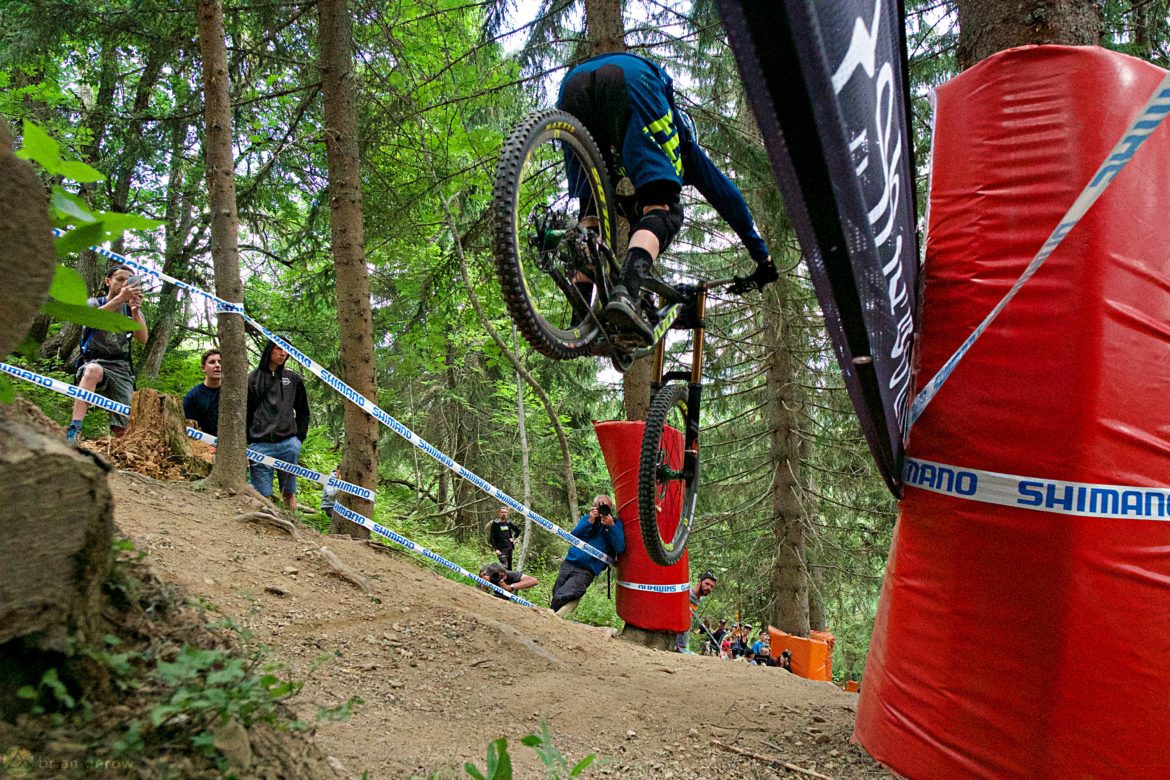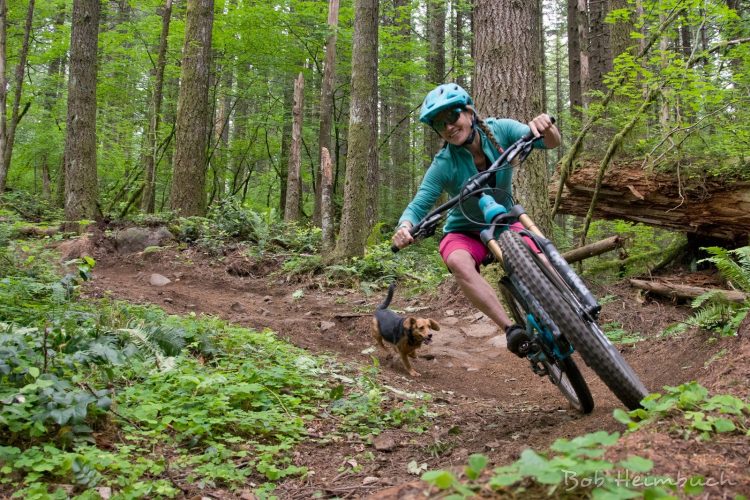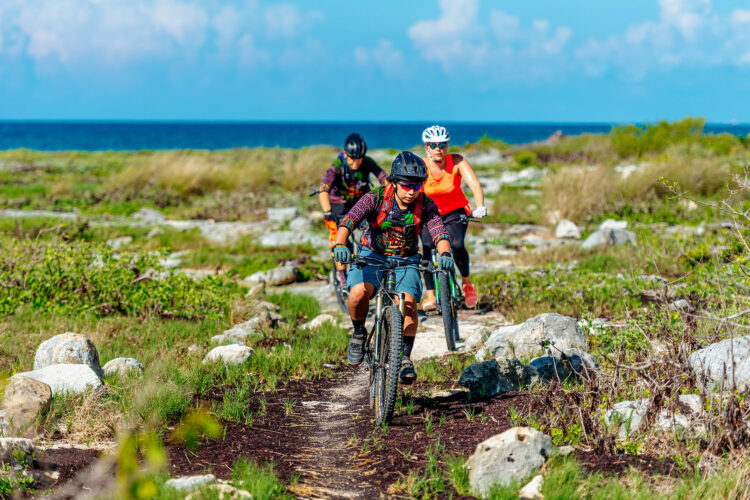
“That kid just passed me in the air” she muttered in astonishment while pushing into the following row of jumps. No matter how fast or capable we once were, every mountain biker reaches a point where the eyes of progression are focused in a new direction. Instead of winning races or gapping roads we look to improving the skills that were neglected when those gaps and medals were all that mattered. Some athletes start to broaden their view toward the beauty surrounding the trail, rather than how well they’re blurring through it. We’ll all get passed and shown up by someone younger eventually, someone with faster healing bones.
Stamping past the existential crisis of our withering youth, decaying vision, and shift-thumb arthritis, folks who have been riding for more years than we haven’t can do a lot to support younger riders and other newcomers to our beloved sport. We can share skills, stories, sweat, and other resources that will give them a leg up on the fun. Like many of the articles we write, this one is intended to incite conversation and critical thinking. I hope it inspires veteran shredders to give back a little of the awe they have received from all those years out on the trail.
The Seventh Generation Principle is based on an ancient Haudenosaunee (Iroquois) philosophy that the decisions we make today should result in a sustainable world seven generations into the future.
-ICTINC.CA
The most obvious way to support new riders is by taking them on rides. Do you have an extra bike or enough components to build one? Consider asking your family members or neighbors to go for a ride. There is likely someone in your life who thinks that your “hobby” is pretty cool, and you could bring them on an easy spin in the forest to try it out. Perhaps you have some skills that you could share to save them a load of mechanical trouble or technical climbing headaches. Take heed, when you share something that profoundly impacts a person’s life you might end up with a new best friend.

Volunteering time, sweat, and knowhow can be another great way to pay the ride forward. With various Boys and Girls Clubs focusing on mountain bike efforts, and local NICA teams and other youth squads popping up everywhere, there’s likely a way to share your energy and resources with newer riders. All of those youth organizations need volunteers to teach riding skills, race tactics, bicycle wrenching, and proper nutrition, and to set up and collect obstacles before and after practice. If chatting and teaching are not your strengths, you could volunteer to drive the shuttle van for your local gravity team or take a radio position along the race course that you once dominated. The new riders will not only appreciate your efforts someday, they may also be better off for any small or significant tips you impart.
We all need some place to ride and to practice skills, right? Every mountain biker knows how to give back by building and maintaining trails and pump tracks for the larger community to enjoy. If there isn’t an urban pump track in your town, pick a few empty lots or underused parks and see if the owners would let you build one. In some places, it’s likely best to partner with the regional mountain bike association that has ties to local government.
If there’s already a pump track or urban trails that kids can access, is there a way for them to get there? Can young people from the other side of town safely access the pump track or singletrack? If not, take a look at that other neighborhood’s green spaces to see if there could be a second set of turns built. Or, set up a community ride with kids from your neighborhood to help them ride across town safely after school. Again, be careful, you and the kids might end up making a bunch of new friends.
For folks who have a little more time to spare, starting a NICA team or similar youth mountain bike program can have a massive impact. If there is a high school in your area that doesn’t yet have a team, contact their physical education staff and get the hub spinning. Groups like Outride are funding a variety of youth-focused programs, including NICA teams, and you don’t necessarily have to have all of the cash or bikes sorted out to get started. If you want a whole group of vetted riders on the hook to help out, you could create a good ol’ mountain bike team, with an emphasis on mentoring new and less experienced riders. That way you all can split up the responsibilities as needed, and share your stronger skills where they make sense.
We all know about the cash donation option, so I’ll skip that. Donating gear, components, and bikes is always helpful. Every salty mountain biker has a stash of gear that doesn’t get used and likely some of it could make someone else’s bike ride better. It’s not doing any good collecting dust in storage. A lot of the sweet components and clothing that we review on Singletracks ends up in the hands of nearby youth mountain bike teams, benefitting them and us alike.
Additionally, some riders could likely afford to hand off a used bike when it’s time to upgrade instead of negotiating over its diminished value. When a bike has been ridden for five or six seasons, the resale value is often so little that it can be hard to justify the hassle of selling it. What seems clapped-out to you might be a massive upgrade for someone else.

Sharing your stories about the history of mountain biking in your area, the creation of a particular trail, or some legendary person’s work within your scene also benefits the global MTB community. If you have a great deal of knowledge about a particular genre or element of mountain biking, please share it with the broader community so we can all learn from it. Our sport is relatively young, and knowing the details of its roots will help future generations to remember and to do it better. You can contact us to tell your story in a written interview or podcast, or write the article yourself if that piques your interests.











1 Comments
Jul 13, 2020